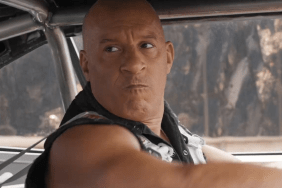Few could have predicted that 2001’s The Fast and the Furious, a pint-sized Point Break rip-off featuring a cast of relative unknowns, would go on to spawn eight sequels, a spinoff series, a Universal Studios ride, and a surprisingly great Netflix cartoon. At the time, the Vin Diesel/Paul Walker vehicle earned tepid reviews (just 54% on Rotten Tomatoes) but surprised everyone with a $40 million opening weekend and an astonishing $207M worldwide haul.
RELATED: Rocket League Is Getting More Fast & Furious Cars
I skipped Fast 1 in theaters after I saw it was from the director of that terrible Skulls flick with Joshua Jackson and, ahem, Paul Walker, but I do remember pushing through lines of motor-heads in order to watch Pearl Harbor for the fifth time — I was young! Reviews of Fast 1 from acquaintances lacked nuisance. My 12-year old brother thought the cars were really cool, while a friend of mine hailed it as “the dopest movie I ever saw.”
Sure.
At any rate, two years would pass before I actually sat down to watch The Fast and the Furious. I only conceded because the previews made the second installment (from John Singleton, no less) look like the greatest action film of all time. Admittedly, I found The Fast and the Furious to be dumb, goofy fun; a cheesy summer blockbuster with slick cars, cool action, and hot women built around a somewhat engaging morality tale.
2 Fast 2 Furious, on the other hand, was a laughable mess — even despite the presence of the lovely Eva Mendes.
As such, my interest in the franchise waned until my brother, now a much older and wiser 20-year-old, convinced me to check out The Fast and the Furious: Tokyo Drift, the third entry in the franchise and the first helmed by Justin Lin.
Long story short: I dug it.
Sure, my expectations were about an inch from ground level, but I thought the action/racing scenes were crisp and found the characters, namely Lucas Black’s southern-fried Sean Bowell and Sung Kung’s easy-going Han, interesting — or, at least, more interesting than Dom or Brian in the previous installments.
More importantly, Tokyo Drift actually ignited my interest in the Furious franchise, so much so that I saw 2009’s Fast & Furious at midnight on its opening weekend … and really liked it. “This Justin Lin kid has a bright future,” I wish I would have said at the time.
Tokyo Drift stands alongside Mission: Impossible III as a better-than-it-had-any-right-to-be threequel that was strong enough to rebuild a quickly decaying franchise into a billion-dollar property with seemingly no end in sight. I dare say, without Tokyo Drift (and Vin Diesel’s eroding career), it’s likely the Fast saga ends up as a series of direct-to-DVD vehicles ala Tremors, Hollow Man, and Legally Blond. (No, seriously. That actually almost happened.)
Oh sure, Tokyo Drift only earned a 37% approval rating on RT and saw dismal box office returns, with many fans citing it as the worst entry of the Fast films, but the threequel also established everything fans currently love about the franchise today, namely, wild action and stunts that upped the typical street racing shenanigans; an all-new locale that set the stage for the globe-trotting exploits of future installments (and helped sell the series to overseas moviegoers); and colorful characters like the snack-loving Han and Twinkie (Bow Wow) whose close ties to Dom (explained in a brilliant post-credit scene) paved the way for future team-ups.
RELATED: Fast & Furious: Spy Racers Rise of SH1FT3R Video Game Announced
Yet, the most significant contribution Tokyo Drift had on the franchise was Justin Lin. His creativity propelled the Fast saga beyond its B-movie trappings into a fully realized universe rivaled only by Marvel and Star Wars in terms of its astonishing popularity. (To say nothing of the way he helped steer the series after Paul Walker’s untimely death, even after vacating the director’s chair following the sixth installment.)
Yeah, yeah, Diesel’s return, along with the rest of the original cast, obviously fueled Universal’s desire to move forward with 2009’s Fast & Furious, but Lin’s creativity and eagerness to push the series into uncharted territory is ultimately why we’re talking about F9 as this summer’s box office savior two decades after the original entry hit theaters.
So, before flocking to the multiplex this weekend to take part in the latest Fast and Furious pop culture phenom, let us give thanks to The Fast and Furious: Tokyo Drift, the maligned sequel that ignited a $6 billion (and counting) franchise; and tip our hats to a director whose unabashed enthusiasm continues to take this street-racing saga to absurd new levels of crazy.










